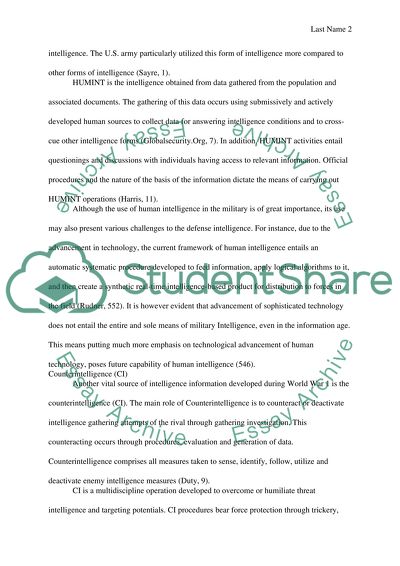What Intelligence Tradecraft Developed During World War 1 Research Paper. Retrieved from https://studentshare.org/military/1432168-what-intelligence-tradecraft-developed-during
What Intelligence Tradecraft Developed During World War 1 Research Paper. https://studentshare.org/military/1432168-what-intelligence-tradecraft-developed-during.


